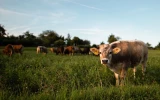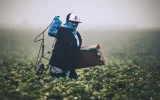Smallholding vs. Farm: 3 Key Differences Explained
Smallholdings and farms are two types of agricultural land use, but they have distinct characteristics. In this article, we'll look at three key differences between the two, so you can make an informed decision about which type of land use is right for you.
Smallholdings are more oriented towards self-sufficiency, whereas farms focus on commercial production. Smallholdings are more diverse in their activities, whereas farms are usually more specialized. Smallholdings often have a greater emphasis on sustainability, while farms are more focused on maximizing yields.
Whether you're looking to start a business or just want a hobby, learn about the range of outputs and type of farming needed that differentiate smallholdings and farms.
Summary
- Smallholdings are usually much smaller than farms, with smaller acreage and fewer animals.
- Smallholdings tend to be run more as a lifestyle choice, with the farmer's primary income coming from off-site sources.
- Farms are more likely to be operated as businesses, with the primary focus being on generating income from the land and livestock.
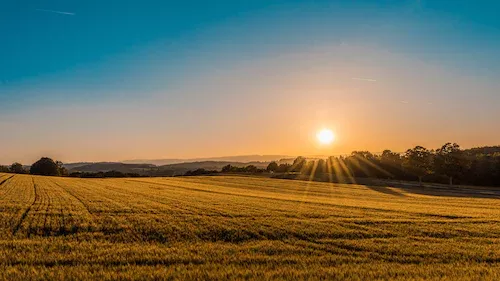
On this page:
3 Key Differences Between A Smallholding and A Farm
Smallholding and farming are both agricultural activities. However, there are key differences between them.
1. Smallholding is smaller than a farm
Smallholdings can vary in size and can range from less than an acre to several hundred acres. They can be as small as a few acres, or as large as a few hundred acres. Smallholdings are generally smaller than commercial farms, but they can still provide significant production capabilities.
The size of a farm can vary greatly depending on the type of farming that is being done. Some farms may only be a few acres, while others may encompass thousands of acres. Many small farms are less than 50 acres, but some large farms may be as big as 10,000 acres.
The size of a farm can also depend on the region in which it is located. In some areas, land may be more plentiful and less expensive, making it more feasible to operate a larger farm. In other areas, land may be more expensive and scarce, so small farms may be more common.
2. Smallholding is focused on providing for small quantities while farms can produce a large harvest
Smallholdings focus on a variety of activities, such as animal husbandry, horticulture, and beekeeping, while farms tend to specialize in one or two activities, such as raising livestock or growing crops.
Smallholdings usually provide enough produce to meet the family's needs and may also produce a small surplus for sale. Farms usually produce a much larger variety of crops and livestock, and they usually produce a large surplus for sale. They can be used for a variety of purposes, including subsistence farming, hobby farming, and commercial farming.
Common animals found in smallholdings include chickens, sheep, goats, pigs, and cattle. Crops are often grown on smallholdings and can include vegetables, fruits, and grains. Smallholdings may also include an orchard, vineyard, or apiary.
The scope of a smallholding is limited by the size of the land, the resources available, and the amount of time and money available to invest in it. The scope of a smallholding will depend on the goals and objectives of the person or family that owns it.
The scope of a farm depends on its size and the resources available to it. For example, a small family farm may focus on growing vegetables and raising small animals, while a large commercial farm may focus on growing large quantities of crops, raising livestock, and producing dairy products.
The scope can also include activities such as agritourism, food processing, and alternative energy production. Depending on the type of farm, the scope may also include activities such as marketing, sales, and distribution of products.
Additionally, the scope of a farm may include managing finances, managing resources, and developing new technologies to increase productivity.
3. A smallholding can be managed by an individual while a farm can be owned by a business
A smallholding is a small agricultural holding that is owned and operated by an individual or family. Ownership of a smallholding can take various forms depending on the wishes of the owner and the laws of the jurisdiction.
In some countries, a smallholding may be owned by an individual or a family. In this situation, the owner may be the sole proprietor, or they may have multiple members of their family living and working on the smallholding. The family may also employ additional staff to help with tasks such as managing the crops and animals, as well as marketing and selling their produce.
In other countries, a smallholding may be owned by a company or a collective. In this situation, the company or collective may have multiple shareholders, each of whom has an equal ownership stake in the smallholding. The company may have a board of directors that makes decisions about how the smallholding is managed, and the shareholders may also receive dividends based on the profits of the smallholding.
A farm, on the other hand, is usually larger and may be owned by an individual or a business. When it comes to the ownership of a farm, there are several different options available. You can own the land outright, purchase shares in a corporate farm, or lease the land from the current owner. Many farms are family-owned, either passed down through generations or purchased by a family member.
You will need to be knowledgeable in the areas of soil management, crop production, pest control, marketing, and financial management. You will also need to be willing to invest in the necessary equipment and supplies, and be able to handle physically demanding tasks such as planting, harvesting, and maintenance.
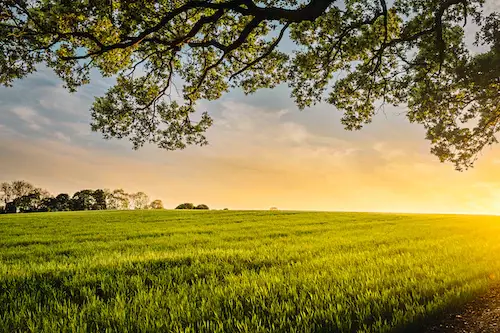
Range of Outputs Between A Smallholding and A Farm
Smallholdings and farms cover a wide range of outputs, from small subsistence farms to large commercial operations.
Smallholdings are used for growing vegetables, keeping chickens, and raising livestock for food. These operations are usually smaller in scale and require less capital than larger farms. Farms, on the other hand, can range from small, family-run operations to large, corporate-run operations. These operations are typically larger and more complex, and they are often used to produce crops and foods for commercial sale.
In terms of output, smallholdings and farms differ greatly. Smallholdings may produce enough food to meet the needs of a family or community, while farms can produce enough to meet the needs of a region or even a nation.
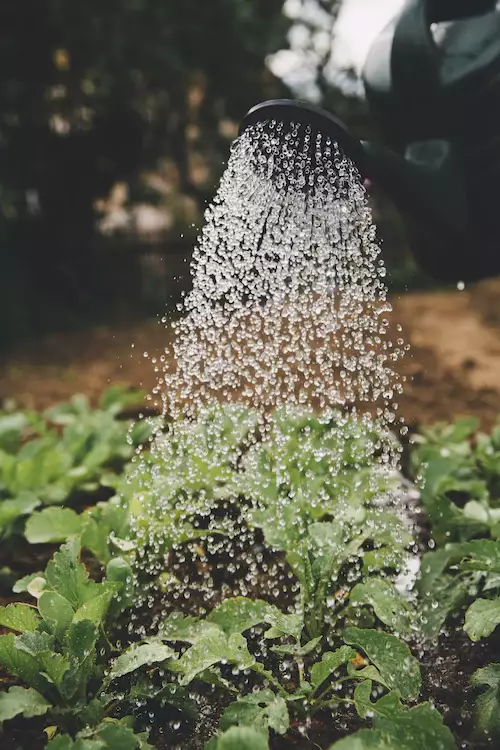
Types of Farming Needed in Smallholdings and in Farms
Here's a list of the different types of farming needed in smallholdings that involve cultivating a small plot of land to produce a variety of products.
- Livestock farming – raising animals such as cattle, sheep, pigs, horses, poultry, and goats
- Vegetable farming – growing vegetables such as tomatoes, peppers, onions, and carrots
- Fruit farming – growing fruits such as apples, pears, peaches, and plums
- Dairy farming – producing milk, cheese, and other dairy products
- Aquaculture – raising fish and shellfish
- Mushroom farming – growing edible mushrooms
- Apiculture – keeping bees to produce honey
- Beekeeping – keeping bees to pollinate crops
- Herbal Farming – growing medicinal plants and herbs
- Floriculture – growing ornamental plants and flowers
This list will explore the various types of farming needed on a farm, including the crops and animals that are raised.
- Crop Farming - growing a variety of crops such as wheat, corn, soybeans, and other vegetables
- Poultry Farming – raising chickens and turkeys in large pens
- Intensive Farming - maximizing the production of crops or livestock with the use of modern technology, such as pesticides, fertilizers, and mechanization
- Commercial Farming - growing crops and raising livestock for sale in the marketplace
- Agroforestry Farming – growing trees, shrubs, and crops in a single system, providing multiple benefits such as soil health, habitat for wildlife, and greater yield of agricultural products
